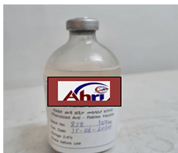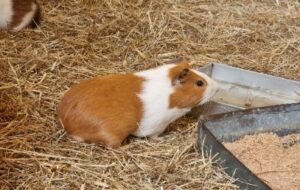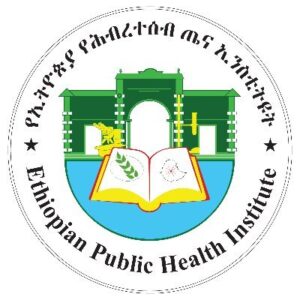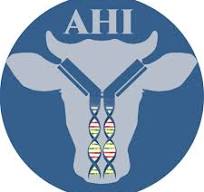Vaccine, Diagnostic and Medical device Research and Development Directorate
Vaccine,Diagnostic & Medical Device Research and Development Directorate (VDMdRDD)
- About VDMdRDD
- Divisions
- Publications
- Products
- Publications
- Projects
- Researchers at VDMdRDD
- Post Graduate Students
- Contact
About VDMdRDD
The advancement and sustainability of health research disciplines in developing countries like Ethiopia heavily rely on the crucial role played by the Vaccines, Diagnostic, and Medical Device Research and Development.
The directorate is dedicated to three major areas of research and development; vaccine, diagnostics and medical device research and development with the laboratory animal breeding and distribution serving as a central crosscutting division. The directorate possesses laboratories for basic research, facilities for producing Fermi-type rabies vaccines, and a variety of laboratory animal species.
Collaborators
National Collaborators
International Collaborators
Vaccine R&D and production Division
The Vaccine Research and Development Division has a crucial mission of creating new vaccines and studying the efficacy of existing vaccines that aim to combat diseases that majorly affect the community. It starts after careful assessment of public health priority diseases. This involves identifying and understanding infectious diseases, developing vaccine candidates through various approaches, including traditional methods and newer technologies like mRNA vaccines, sub-unit vaccines, conducting preclinical studies to evaluate safety and efficacy in animals, initiating clinical trials to assess safety and efficacy in human populations.
The preclinical evaluation of vaccine candidates is conducted through testing in animal models, starting with small mammals like mice or rats, and subsequently non-human primates. Furthermore, the assessment of the vaccine's efficacy, effectiveness, and the factors associated with protection will also be carried out to support the national Expanded Program on Immunization (EPI).
Diagnostics R&D and production Division
This division is dedicated to the advancement of new assay development, the evaluation of cutting-edge diagnostic technologies, and the validation process. The research and development efforts encompass the creation, testing, and enhancement of in vitro diagnostic kits and instruments specifically designed for use in resource-limited environments. These endeavors involve assessing the sensitivity and specificity of individual diagnostic materials, as well as determining their predictive values and other relevant parameters. The development of in vitro diagnostic devices and kits follows a series of crucial stages, including product project design, prototype development, product finalization, and product acceptance. This development process may draw upon various diagnostic principles, methods, and related technologies, such as biochemical, immunodiagnostic, molecular diagnosis, microbiological diagnosis, blood diagnosis, and Point-of-care testing (POCT). This will be done by identifying biomarkers or specific indicators associated with diseases using recent technologies, and simple point-of-care devices. The study also include conducting validation studies to ensure the accuracy and reliability of diagnostic tools, collaborating with regulatory and other stakeholders to develop and obtain approvals for diagnostic products.
Medical device R&D production Division
The goal of medical device research and development is to translate health research and innovation into tangible benefits for health care providers, patients and society. This will act as cutting edge for interdisciplinary, sustainable and patient-centric health service delivery. In addition, this will support and collaborate national and international projects and initiatives that aims to bring stakeholders together, and pave the way for a more integrated approach to healthcare focusing on health care devices involved in diagnosis, treatment, and disease management
Laboratory Animal Administration Division
Laboratory Animal Breeding and research Division is one of the research divisions under Vaccine, Diagnostic and Medical device research and development directorate in Armauer Hansen research institute that bred different types of laboratory animals for different biomedical research purpose and doing different laboratory animal related researches in the country.
Currently, the division bred mice, rat, rabbit, guinea pig and hamster and making rodent feed in to Pelleted form for rodents, and distribute for different research directorates in AHRI, different universities, research institutes and colleges in the country. Specifically, the division works on laboratory animal management, laboratory animal breeding and genetics, laboratory animal health, laboratory animal feed and nutrition, laboratory animal-borne zoonotic diseases, collaboration with researchers is a key aspect of AHRI's work.
The division works closely with the scientists to provide animals with specific genetic backgrounds tailored to experiments. Also contribute to the design and implementation of experiments involving laboratory animals. Provide training for researchers, technicians and other who use and care laboratory animals, on the proper handling, care, and ethical use of laboratory animals.
Publications
2023
Abebe Mengesha. Aga , Demise Mulugeta, Yeweynshet Tesera, Birhanu Hurisa, Hailu Lemma, Ayele Bizuneh Jemal Mohammed , Mekoro Beyene, Yimer Mulugeta, Bayeh Ashenafi, Samuel Woldekidan, Dereje Nigussie, 2023. Health professionals KAP study on rabies exposure assessment and NTV administration in Ethiopia. F1000Research, 12: 582
Fanos Tadesse Woldemariyam, Demessa Negessu, Tsion Bilata, Ayelech Muluneh, Dereje Shegu Gebrewold, Ibsa Teshome Ebisa, Jan Paeshuyse.Humoral Immune Response in Calves Vaccinated with Monovalent Vaccines or a Trivalent Combination thereof and matching of these Vaccines to the selected circulating Foot-and-Mouth Disease Viruses in Ethiopia, Vaccines 11(8), 1352, 2023, DOI: 10.3390/vaccines11081352
Fanos Woldemariyam and Jan Paeshuyse, 2023. Viral Protein 1 (VP1) Sequence-Based Genetic Diversity of SAT 2 FMDV Circulating in Ethiopia from 1990 to 2015, Vet Med (Auckl). 14: 91–101. doi: 10.2147/VMRR.S408352
Fanos Woldemariyam , Christopher Kinyanjui Kariuki , Joseph Kamau , Annebel De Vleeschauwer , Kris De Clercq , David J Lefebvre , Jan Paeshuyse,2023.Epidemiological Dynamics of Foot-and-Mouth Disease in the Horn of Africa: The Role of Virus Diversity and Animal Movement, Viruses,MDPI,14;15(4):969. DOI: 10.3390/v15040969
2022
Gashaw Gebrewold , Timothy J Colston , Ashebir Abebe , Karifa Kourouma , Robinah Najjemba, Demise Mulugeta , Hailu Lumma , Sintayehu Abdella , Tamrat Haile , Maria Zolfo , Veerle Vanlerberghe, Distribution of snake species and snakebites in hotspots of Ethiopia. Infect Dev Ctries 2022; 16(8.1):45S-51S. doi:10.3855/jidc.15973
Adugna Negussie Gudeta, Carin Andrén Aronsson, Bayissa Bekele Binagdie, Alemayehu Girma, and Daniel Agardh. Incidence of celiac disease autoimmunity and associations with maternal tuberculosis and pediatric Helicobacter pylori infections in 4-year-old Ethiopian children followed up in an HLA genotyped birth cohort. Front. Pediatr. (2022); 10:999287.
Mebrat Ejo, Gabriela Torrea, Ermias Diro, Ayenesh Abebe, Meseret Kassa, Yilak Girma, Eyasu Tesfa, Kefialew Ejigu, Cecile Uwizeye, Florian Gehre, Bouke C de Jong, Leen Rigouts. Strain diversity and gene mutations associated with presumptive multidrug-resistant Mycobacterium tuberculosis complex isolates in Northwest Ethiopia. J Glob Antimicrob Resist; 32:167-175. doi: 10.1016/j.jgar.2022.11.012. PMID: 36470362.
Desalegn Muleta, Simieneh A , Sahile S , Mesfin G , Abdissa D, Workineh L. 2022. Bacterial Profile and Their Antimicrobial Resistance Pattern among Adult Patients with Suspected Bloodstream Infection at Jimma University Medical Center, Ethiopia. International Journal of Medical Research & Health Sciences,11 (6): 104-116
2021
Jemal Mohammed, Abebe, Mengesha Birhanu Hurisa, Demise Mulugeta, Abate Waldetensai, Yeweynshet Tesera, Worku Gemechu, Ayele Bizuneh, Dejene Getachaw and Asnake Desalegn, 2021. Sequential Adaptation of Vero Cell Lines in Serum Free Medium for Fixed Rabies Virus Propagation. Int J Appl Sci Res Rev Vol. 8 No. 6:20.
Abebe Mengesh. Aga*, Mekoro Beyene, Anberbir Alemu, Fiseha Alemayehu, Tigist Abebe, Gemechis Motuma, DemiseMulugeta, Jemal Mohamed, Efrem Emana, Serkadis Oljira and Birhanu Hurisa 2021. The Status of Rabies Post Exposure Prophylaxis using Nerve Tissue Anti-Rabies Vaccine in Ethiopia J Vaccines Vaccin, Vol. S13 No: 1000005
2019
Eshetu L Haile, Birhanu Hurisa, Blen Girma, Sintayehu Ashenafi, Dejene Getachew, Bedasa Gidisa, Hailu Lema, Abebe Mengesha, Demise Mulugeta, Gashaw Gebrewold, and Dereje Nigussie (2019). STRATEGIC AUDITING OF VACCINE PRODUCTION AGAINST CURRENT GOOD MANUFACTURINGPRACTICE (cGMP). JVT Volume 25, Issue 6
Abebe Aga, Birhanu H. et al. (2018). Effective multiplicity of infection and incubation period for fixed rabies virus strains propagation on BHK-21 and Vero cell lines. E.JPH, 1;1-23
1.Nerve Tissue Vaccine (Fermi-type) vaccine

Description:
Nerve Tissue Vaccine (NTV) prepared from brain tissue of adult sheep which is artificially infected/inoculated with PV-12 grown on rabbit brain. The sheep brain is digested and purified then live attenuated with 5%phenol. Live attenuated NTV contains inactivated rabies virus (PV-12 strain) antigen with potency> 0.5IU per dose.
Presentation: The vaccine is available in 100ml vial of full doses.
Storage and Shelf life: - The shelf life for this vaccine is five months from the date of issuance provided that the vaccine is kept at a temperature between 2 o C and 8 o C.
N.B: - Do not freeze! Freezing destroys the antigenicity of phenolized vaccine and the vaccine shall not be used if frozen.
Do not use nerve tissue anti-rabies vaccine for pre-exposure prophylaxis
Dosage form: The dose is based on age (table 1) is injected intradermally or subcutaneously.
Shake well before use
Post Exposure prophylaxis: The schedule for post-exposure prophylaxis using nerve tissue anti-rabies vaccine shall follow the following schedule:
Summary for age-based dosage
Age group and years | Vaccine Volume | Schedule |
< 2 years | 2 | Daily 1 injection for 14 days and 3 injections with 10 days interval |
3 years | 3 | Daily 1 injection for 14 days and 3 injections with 10 days interval |
4 years | 4 | Daily 1 injection for 14 days and 3 injections with 10 days interval |
>5 years | 5 | Daily 1 injection for 14 days and 3 injections with 10 days interval |
Immunity: Based on WHO guidance, the adequate protective virus neutralizing antibody (VNA) titer for anti-rabies vaccine is 0.5 IU/mL. In healthy individuals, this adequate concentration is regularly achieved by day 14 of post-exposure immunization.
Summary for vaccination after re-exposure
Re-exposure with history of vaccination/months | Decision | Number of doses |
1-3 months | No vaccine required | - |
3-6 months | Give booster dose | 3booster doses, in 10 days intervals |
>6 months | Give full dose of vaccination | Full course of vaccination(17injection) |
Precaution in case of Adverse effect:
Nerve tissue anti-rabies vaccine contains a phenolized 5% homogenate of rabies virus-infected sheep brain suspension. The following might be observed:-
Local adverse events: Nerve tissue anti-rabies vaccine contains myelin basic protein. The vaccination may cause pain, swelling, tenderness and itching, erythematous patches after the beginning of the anti-rabies treatment, fading in 6-8 hours and reappearing after the next dose.
2. Laboratory Animals
Severe adverse events: - Severe adverse events may occur with nerve tissue anti-rabies vaccines. Severe adverse events have been mainly neurological and resulted from an immune response to the myelin basic protein contained in the vaccine. The incidence of these reactions varies widely ranging from 0.14 per 1,000 to 7 per 1,000 cases per treatments. N.B: - When neuro-paralytic signs are observed, the following shall be done:-
1. If the dose has not been completed or if further immunization is indicated, the vaccine shall be replaced by an alternative modern vaccine (for example cell culture vaccine).
2. Individual with severe adverse effects shall be referred for further investigation and treatment. Warning: For human use only.
Laboratory animals description
Our animal facility provides the following animals species for own use for R&D. Animals are housed in strict biosecurity controlled facility with very good welfare. In addition, we also provide laboratory animals for various research activities. The laboratory animals found in our facility are:-
1.Mice Breed: Swiss albino & Charles River, Inbred |  | 2.Rat Breed: (Wistar Albino), Inbred |  | |
3.Rabbit Breed: (White Newzleand and California), Inbred |  | 4.Guineapig Breed: (Cavia porcellus), Inbred |  |
Publications
2023
Abebe Mengesha. Aga , Demise Mulugeta, Yeweynshet Tesera, Birhanu Hurisa, Hailu Lemma, Ayele Bizuneh Jemal Mohammed , Mekoro Beyene, Yimer Mulugeta, Bayeh Ashenafi, Samuel Woldekidan, Dereje Nigussie, 2023. Health professionals KAP study on rabies exposure assessment and NTV administration in Ethiopia. F1000Research, 12: 582
Fanos Tadesse Woldemariyam, Demessa Negessu, Tsion Bilata, Ayelech Muluneh, Dereje Shegu Gebrewold, Ibsa Teshome Ebisa, Jan Paeshuyse.Humoral Immune Response in Calves Vaccinated with Monovalent Vaccines or a Trivalent Combination thereof and matching of these Vaccines to the selected circulating Foot-and-Mouth Disease Viruses in Ethiopia, Vaccines 11(8), 1352, 2023, DOI: 10.3390/vaccines11081352
Fanos Woldemariyam and Jan Paeshuyse, 2023. Viral Protein 1 (VP1) Sequence-Based Genetic Diversity of SAT 2 FMDV Circulating in Ethiopia from 1990 to 2015, Vet Med (Auckl). 14: 91–101. doi: 10.2147/VMRR.S408352
Fanos Woldemariyam , Christopher Kinyanjui Kariuki , Joseph Kamau , Annebel De Vleeschauwer , Kris De Clercq , David J Lefebvre , Jan Paeshuyse,2023.Epidemiological Dynamics of Foot-and-Mouth Disease in the Horn of Africa: The Role of Virus Diversity and Animal Movement, Viruses,MDPI,14;15(4):969. DOI: 10.3390/v15040969
2022
Gashaw Gebrewold , Timothy J Colston , Ashebir Abebe , Karifa Kourouma , Robinah Najjemba, Demise Mulugeta , Hailu Lumma , Sintayehu Abdella , Tamrat Haile , Maria Zolfo , Veerle Vanlerberghe, Distribution of snake species and snakebites in hotspots of Ethiopia. Infect Dev Ctries 2022; 16(8.1):45S-51S. doi:10.3855/jidc.15973
Adugna Negussie Gudeta, Carin Andrén Aronsson, Bayissa Bekele Binagdie, Alemayehu Girma, and Daniel Agardh. Incidence of celiac disease autoimmunity and associations with maternal tuberculosis and pediatric Helicobacter pylori infections in 4-year-old Ethiopian children followed up in an HLA genotyped birth cohort. Front. Pediatr. (2022); 10:999287.
Mebrat Ejo, Gabriela Torrea, Ermias Diro, Ayenesh Abebe, Meseret Kassa, Yilak Girma, Eyasu Tesfa, Kefialew Ejigu, Cecile Uwizeye, Florian Gehre, Bouke C de Jong, Leen Rigouts. Strain diversity and gene mutations associated with presumptive multidrug-resistant Mycobacterium tuberculosis complex isolates in Northwest Ethiopia. J Glob Antimicrob Resist; 32:167-175. doi: 10.1016/j.jgar.2022.11.012. PMID: 36470362.
Desalegn Muleta, Simieneh A , Sahile S , Mesfin G , Abdissa D, Workineh L. 2022. Bacterial Profile and Their Antimicrobial Resistance Pattern among Adult Patients with Suspected Bloodstream Infection at Jimma University Medical Center, Ethiopia. International Journal of Medical Research & Health Sciences,11 (6): 104-116
2021
Jemal Mohammed, Abebe, Mengesha Birhanu Hurisa, Demise Mulugeta, Abate Waldetensai, Yeweynshet Tesera, Worku Gemechu, Ayele Bizuneh, Dejene Getachaw and Asnake Desalegn, 2021. Sequential Adaptation of Vero Cell Lines in Serum Free Medium for Fixed Rabies Virus Propagation. Int J Appl Sci Res Rev Vol. 8 No. 6:20.
Abebe Mengesh. Aga*, Mekoro Beyene, Anberbir Alemu, Fiseha Alemayehu, Tigist Abebe, Gemechis Motuma, DemiseMulugeta, Jemal Mohamed, Efrem Emana, Serkadis Oljira and Birhanu Hurisa 2021. The Status of Rabies Post Exposure Prophylaxis using Nerve Tissue Anti-Rabies Vaccine in Ethiopia J Vaccines Vaccin, Vol. S13 No: 1000005
2019
Eshetu L Haile, Birhanu Hurisa, Blen Girma, Sintayehu Ashenafi, Dejene Getachew, Bedasa Gidisa, Hailu Lema, Abebe Mengesha, Demise Mulugeta, Gashaw Gebrewold, and Dereje Nigussie (2019). STRATEGIC AUDITING OF VACCINE PRODUCTION AGAINST CURRENT GOOD MANUFACTURINGPRACTICE (cGMP). JVT Volume 25, Issue 6
Abebe Aga, Birhanu H. et al. (2018). Effective multiplicity of infection and incubation period for fixed rabies virus strains propagation on BHK-21 and Vero cell lines. E.JPH, 1;1-23
Ongoing projects
1.በኢትዮጲያ ውስጥ ሰዎች ለእብድ ውሻ በሽታ ከተጋለጡ በኋላ የነርቭ ቲሹ የእብድ ውሻ መከላከያ ክትባት ከወሰዱ ኋላ ክትባቱ ቫይረሱን የመከላከል ዓቅም ጥናት ማከናወን (Immune response of patients who receive the nerve tissue anti-rabies vaccine (Fermi type) produced in Ethiopia): On going
- Rabies virus strains characterization circulating in Ethiopia. On going
- Antivenom development -Biochemical study on venom of venomous snakes of Ethiopia. On going
- Metagenomic analysis of rodent microbial diversity and their public health importance in Ethiopia. On going
5.የኮቪድ-19 ክትባት የመከላከል አቂም ማጥናት፣ የተከተቡ ሰዎች ካልተከተቡ አንጻር በሽታ የመቋቃም ሁኔታ ማጥናት፣ ከቫይረስ ዝርያዎች ለእንፌክሽን መንስኤ የሆነዉን በዘረመል ጥናት መለየት፣ የCOVID-19 RDT test ከRT-PCR አንፃር sensitivit and specificity ማነፃፀር
6.የሳልሞኔላ ባክቴሪያን ከተለያዩ ናሙናዎች በመሰብሰብና በመለየት፣ ዘረመል ጥናት በማከሄድ በአፒታሜር የምርምር ዘዴ ማልማት (Salmonella isolation and genome sequencing for aptamer-based diagnostic development)
7.In-house laboratory reagent development and production
The active research staff of the directorate are 35 (17 male and 18 female) and three on study leave.
 Dereje Nigussie Woldemichael
Dereje Nigussie Woldemichael
Senior Researcher (B.Pharm, PhD), Directorate Director
Research Interest: Vaccine, diagnostics and medical device Email:dereje.nigussie@ahri.gov.et
Tel: +251911660850
 Fanos Tadesse Woldemariam
Fanos Tadesse Woldemariam
Researcher II (DVM,MSc,PhD), Diagnostic Division Head
Research Interest: Vaccine, diagnostics and medical device
Email:fanoswoldemariyam@gamil.com
Tel: +251911754201
 Demis Mulugeta
Demis Mulugeta
Associate Researcher II (BSc, MSc), Vaccine Disivion Head
Research Interest: Vaccine, diagnostics and medical device
Email: dememul30@gmail.com
Tel: +251903103556
 Henok Ferede Assefa
Henok Ferede Assefa
Assistant Researcher (BSc, AHA), Laboratory Animals Administration Division
Research Interest: Laboratory animal Health, Genetics, Management, Nutrition, zoonotic disease, vaccine, diagnostics, one health, IACUC, Advising and guidance on laboratory animal facilities
Email: henokfere121212@gmail.com
Tel: +251912708370
 Abebe Mengesha Aga
Abebe Mengesha Aga
Senior Researcher (BSc, MSc)
Research Interest: Vaccine, diagnostics and medical device
Email: agagurmu@yahoo.com
Tel: +251911050654
 Jemal Mohammed Kebeto
Jemal Mohammed Kebeto
Associate Researcher I (BSc, MSc)
Research Interest: Vaccine, diagnostics and medical device
Email: jemlkabe@gmail.com
Tel: +251922688299
 Amberber Alemu Gizaw
Amberber Alemu Gizaw
Associate Researcher I (BSc, MSc)
Research Interest: Vaccine, diagnostics and medical device
Email: anbereberalemu@gmail.com
Tel: +251913329589
 Endalkachew Girma Andargie
Endalkachew Girma Andargie
Associate Researcher (BSc, MSc,PhD fellow)
Research Interest: Vaccine, diagnostics and medical devices
Email:endalkgirma21@gmail.com/endalkgirma12@gmail.com
Tel: +251918166041/ +251979410008
 Ayele Bizuneh Gizaw
Ayele Bizuneh Gizaw
Associate Researcher I (DVM)
Research Interest: Vaccine, diagnostics and medical devices
Email: ayelebizu@gamil.com
Tel: +251913778486
 Dejene Getachew Bekele
Dejene Getachew Bekele
Associate Researcher I
Research Interest: Vaccine, diagnostics and medical device
Email:dejenegetachew4137@gmail.com
Tel: +251921103354
 Mebrat Ijo Kitata
Mebrat Ijo Kitata
Researcher II (DVM,MSc, PhD)
Research Interest: Vaccine, diagnostics and medical device
Email: drmebrat@yahoo.com
Tel: +251911114550
 Desalegn Muleta Kenea
Desalegn Muleta Kenea
Associate Researcher II (BSc, MSc)
Research Interest: Vaccine, diagnostics and medical device
Email: dmuleta4all@gamil.com
Tel: +251921423109
 Adugna Nigussie
Adugna Nigussie
Researcher II (BSc, MSc,PhD)
Research Interest: Vaccine, diagnostics and medical device
Email: adugalab@gmail.com
Tel: +251911336360
 Abera Motuma Idosa
Abera Motuma Idosa
Junior Researcher (BSc, Chemical engineer)
Research Interest: Vaccine, diagnostics and medical device
Email: aberamotumaidosa@gamil.com
Tel: +251927275338
 Bilise Waktole Dadi
Bilise Waktole Dadi
Junior Researcher (BSc, Chemical engineer)
Research Interest: Vaccine, diagnostics and medical device
Email: b.wako29@gmail.com
Tel: +251911711211
 Shambel Tadess
Shambel Tadess
Assistant Researcher II (MD)
Research Interest: Vaccine, diagnostics and medical device
Email: shambeltadese1@gmail.com Tel: +251962758523
Fermi –type (NTV) rabies vaccine producing staffs



Dinkinesh Dube Serkadis Oljira Tigist Abebe
Laboratory Animals Management staffs
Staff on PhD Study Leave
Endalkachew Girma Andargie, Birhanu Hurissa
Staffs on Masters study Leave
Ayele Bizuneh Gizaw and Dejene Getachew
Contact

Dereje Nigussie Woldemichael
Directorate Director, VDMdRDD
Email:dereje.nigussie@ahri.gov.et
Tel: +251911660850






